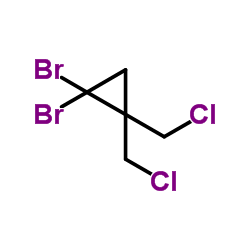Crystalline arrays of pairs of molecular rotors: correlated motion, rotational barriers, and space-inversion symmetry breaking due to conformational mutations.
Cyprien Lemouchi, Konstantinos Iliopoulos, Leokadiya Zorina, Sergey Simonov, Pawel Wzietek, Thomas Cauchy, Antonio Rodríguez-Fortea, Enric Canadell, Jiří Kaleta, Josef Michl, Denis Gindre, Michael Chrysos, Patrick Batail
Index: J. Am. Chem. Soc. 135(25) , 9366-9376, (2013)
Full Text: HTML
Abstract
The rod-like molecule bis((4-(4-pyridyl)ethynyl)bicyclo[2.2.2]oct-1-yl)buta-1,3-diyne, 1, contains two 1,4-bis(ethynyl)bicyclo[2.2.2]octane (BCO) chiral rotators linked by a diyne fragment and self-assembles in a one-dimensional, monoclinic C2/c centrosymmetric structure where two equilibrium positions with large occupancy imbalance (88% versus 12%) are identified on a single rotor site. Combining variable-temperature (70-300 K) proton spin-lattice relaxation, (1)H T1(-1), at two different (1)H Larmor frequencies (55 and 210 MHz) and DFT calculations of rotational barriers, we were able to assign two types of Brownian rotators with different activation energies, 1.85 and 6.1 kcal mol(-1), to the two (1)H spin-lattice relaxation processes on the single rotor site. On the basis of DFT calculations, the low-energy process has been assigned to adjacent rotors in a well-correlated synchronous motion, whereas the high-energy process is the manifestation of an abrupt change in their kinematics once two blades of adjacent rotors are seen to rub together. Although crystals of 1 should be second harmonic inactive, a large second-order optical response is recorded when the electric field oscillates in a direction parallel to the unique rotor axle director. We conclude that conformational mutations by torsional interconversion of the three blades of the BCO units break space-inversion symmetry in sequences of mutamers in dynamic equilibrium in the crystal in domains at a mesoscopic scale comparable with the wavelength of light used. A control experiment was performed with a crystalline film of a similar tetrayne molecule, 1,4-bis(3-((trimethylsilyl)ethynyl)bicyclo[1.1.1]pent-1-yl)buta-1,3-diyne, whose bicyclopentane units can rotate but are achiral and produce no second-order optical response.
Related Compounds
| Structure | Name/CAS No. | Molecular Formula | Articles |
|---|---|---|---|
 |
1,1-Dibromo-2,2-bis(chloromethyl)cyclopropane
CAS:98577-44-7 |
C5H6Br2Cl2 |
|
Improved Preparations of 3-Chloro-2-(chloromethyl)-1-propene...
[J. Org. Chem. 60(14) , 4666-4668, (1995)] |
|
Concerning the synthesis of [1.1. 1] propellane. Belzner J, ...
[Chem. Ber. 122(2) , 397-398, (1989)] |
|
[1.1. 1] Propellane: Reaction with Singlet Dihalocarbene. Le...
[Bull. Korean Chem. Soc. 19(3) , 367-369, (1998)] |